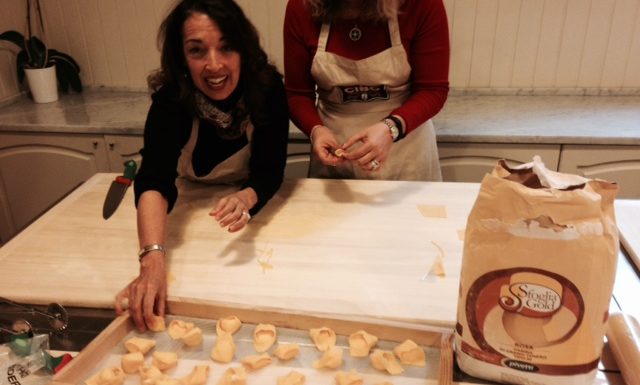Discovering Pleasures of this City of Towers, Tortellini, and Tette
Whenever I’m in Italy I find myself standing next to a stranger, admiring a naked woman.
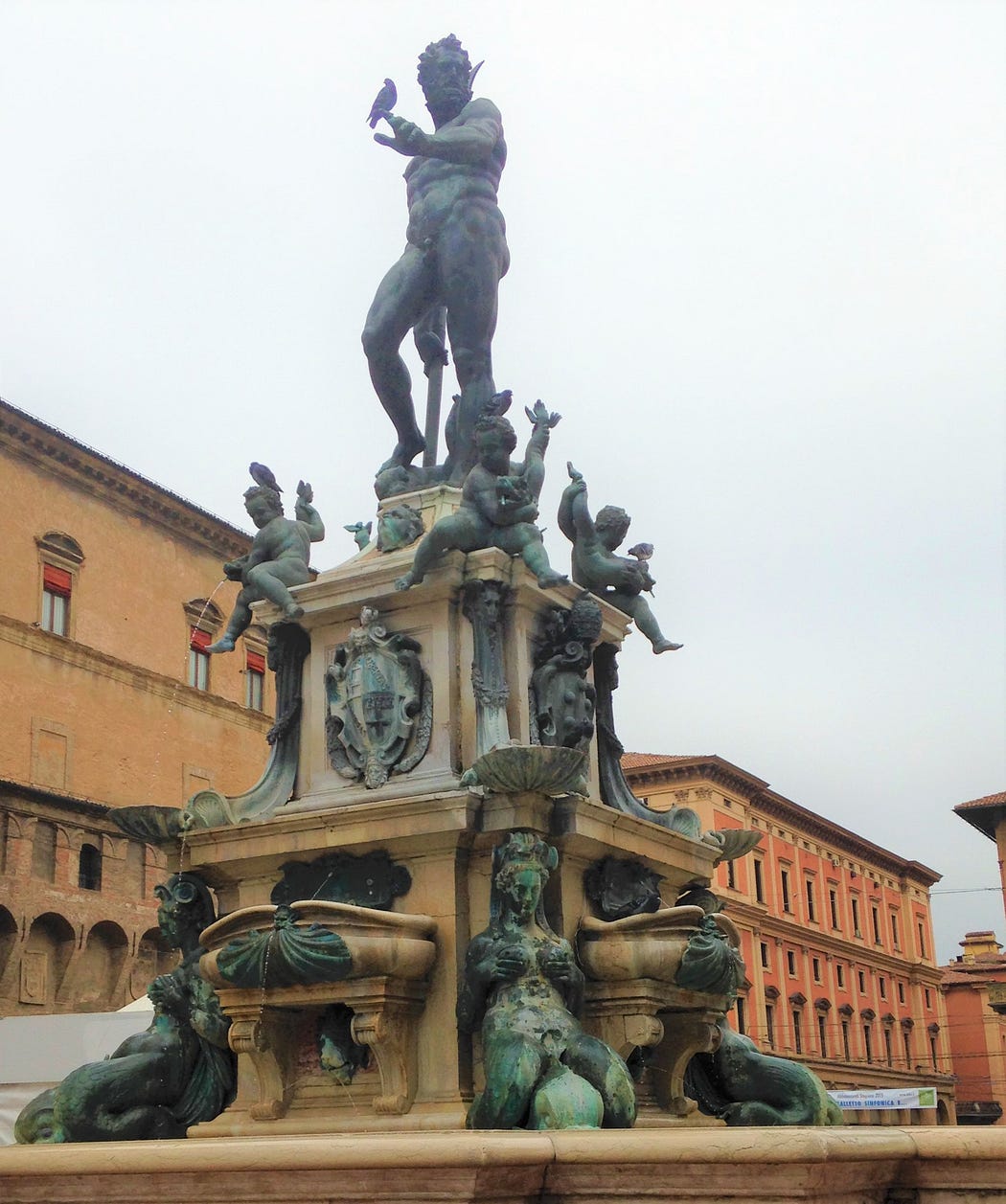
Such as when I stood in Bologna’s Piazza Maggiore with a scholarly-looking signor, gasping over a naked nymph who was spouting water from her breasts. The sculpture, (accompanied by three sister nymphs), forms the base of the Fountain of Neptune. The stranger, Claudio Cento, is a local guide who I’d just met. Claudio is a serious type, but laughed as we circled the nymphs and I asked, “So is this why Bologna is famous for Three “T”s: Torre, Toretellini, and Tette?”. Claudio nodded towards the voluptuous tette, “It’s long been believed, with all the rich food, Bolognese women are…,” and his voice trailed off, as he proudly gestured to the well-endowed figures.
I could easily experience all of Bologna’s “T”s right here in the heart of the historic center. I’d already indulged in a swoon-inducing bowl of tortellini at Tamburini, a cafetteria that’s the star of the nearby market area. At the opposite end of the piazza, a pair of Bologna’s famous medieval torre, (towers), loomed above us.
With all the enticing history and what foodies say is “the best food in Italy,” it’s surprising that Bologna is not famous for “T” as in tourism. Compared to the crowds of Florence, only 40-minutes away by train, here in Bologna, I could blend in with Italians. As the only sign-up for Claudio’s walking tour, it was lovely to be strolling in the centro storico, where elegant porticoes cover the sidewalks.
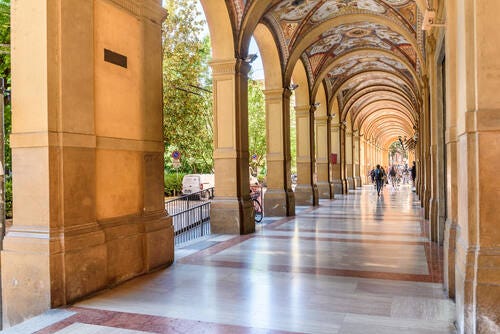
Recently UNESCO added these architectuaral beauties to its World Heritage List, citing them as symbols of Bologna’s unique urban identity. They make perfect spots for students from the city’s prestigious Accademia Filarmonica to casually set up and play Mozart concertos. Along with the music was a steady stream of college kids from Bologna’s university, the oldest in Europe, established in 1088. They chattered on cell phones, a smattering of graduates wore laurel wreaths on their heads.
Claudio stepped into an alleyway and opened a non-descript looking door marked “Vino” to give me a peek inside the Osteria del Sole.
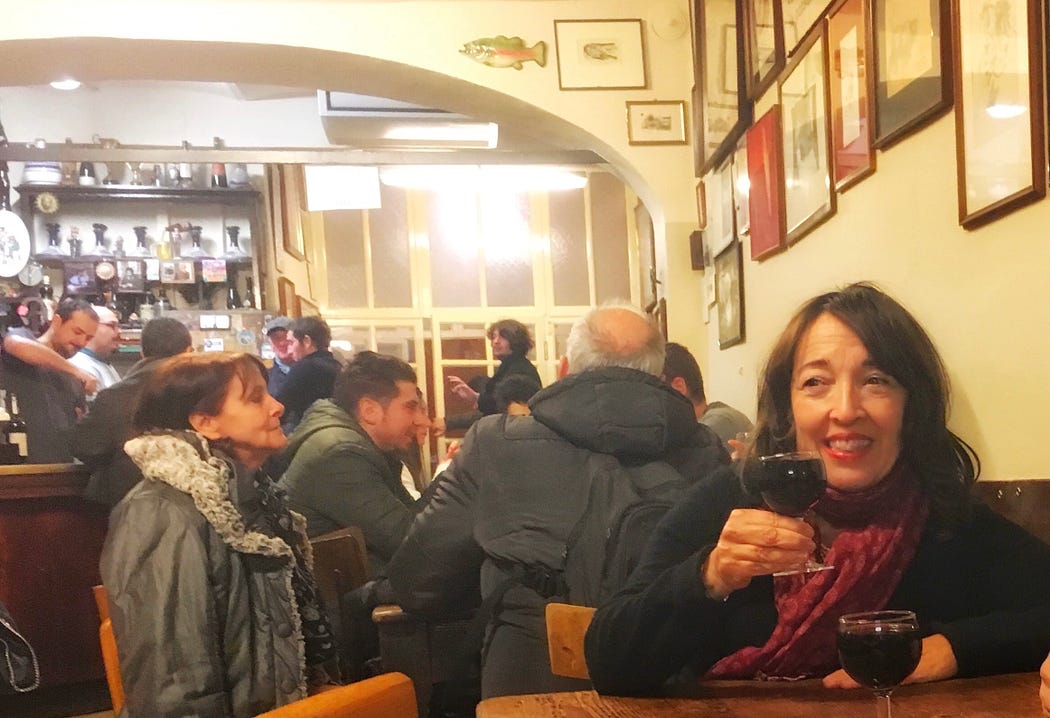
It’s a rustic set-up, that’s been around since 1465, filled with Bolognese of all ages at long wooden tables, enjoying glasses of wine and food they’d brought in from the nearby market. Though many Italian restaurants these days are called osterias, the original definition of the word is a wine-only establishment, welcoming customers to bring in whatever they’d like to eat. To see this authentic tradition going strong, smack in the city center, is a marvel.
While Bologna honors tradition, it’s also long been known for forward-thinking, non-traditional politics. It was one the first cities in the world to abolish slavery in the 13th century, and in modern times, it’s similar to California’s Berkeley — a college town with a high level of political awareness and spirited left-wing protests. Since the 1970s it’s became a center for gay activists, with Marcella di Folco making history as the first transsexual woman in Europe to be elected as communal councilor. Wonderful for travelers is that Bologna is environmentally progressive and its urban planners have pedestrianized the historic center, making it delightful for strolling.
Great thinkers have always been attracted to the city, including Dante. His spirit lives on in the Santo Stefano complex, a melding of what were seven churches, now four, which mixes Gothic and Romanesque architecture.

It was thrilling to find myself alone in a section of the complex now called “Dante’s cloister”, where the poet was said to spend time in contemplation, adorned with architecture that inspired his Il Purgaturio punishments. Surrounding me were columnus sculpted with tortured figures — a man being crushed by a boulder, another twisted so that his head sat above his rear end.
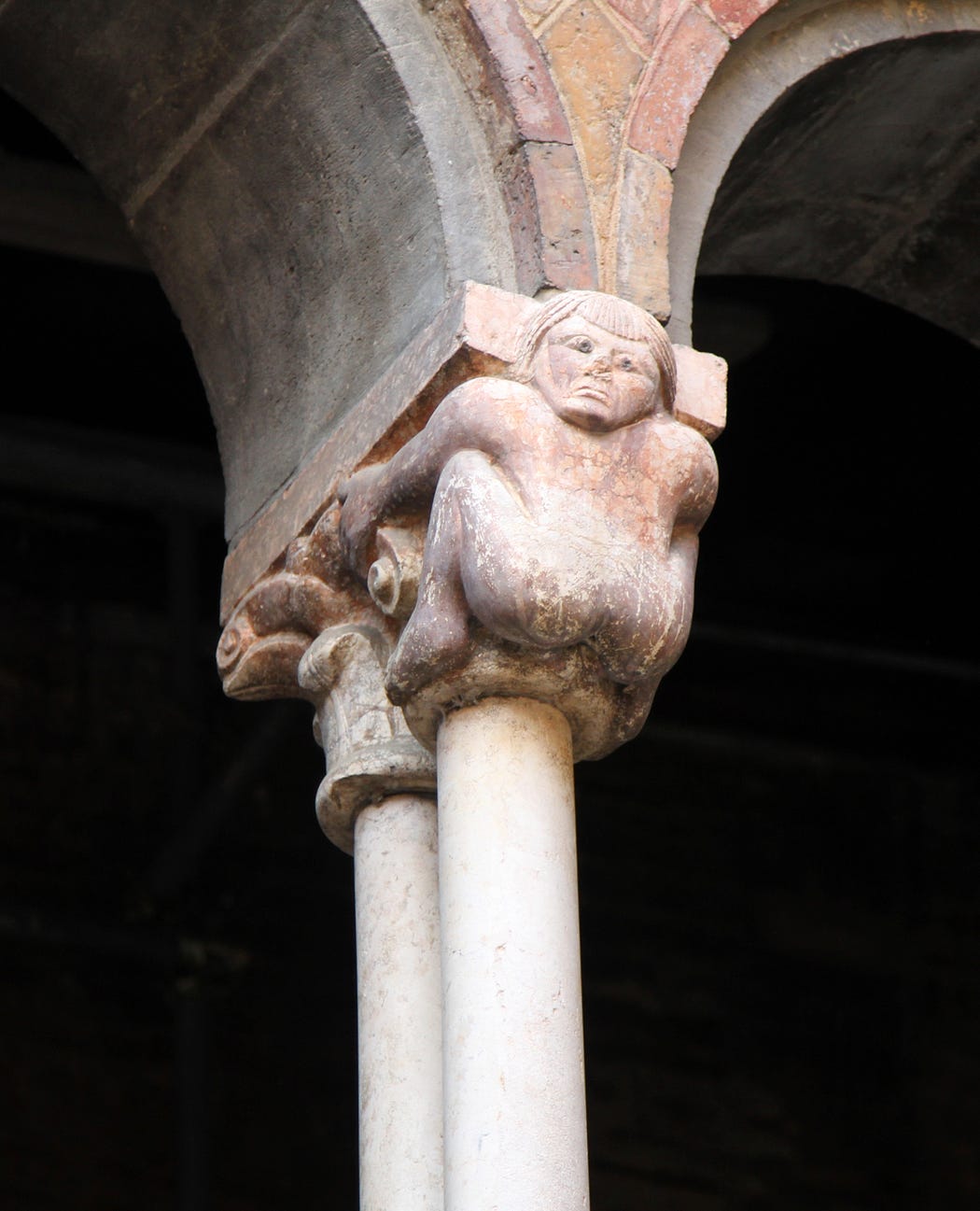
To get in on the secrets of Bologna’s deliciousness, I signed up at CIBO (Culinary Institute of Bologna), for a pasta making lesson. I’d always prided myself on my Bolognese sauce (here simply called ragu), but discovered Bolognese in Bologna is quite different. “It’s all about the meat, with very little tomato,” instructor Lucia said, as she added just a few tablespoons of pureed tomato to the pot, akin to a whisper of vermouth in a good martini. As the sauce simmered and filled the kitchen with a rich aroma, another American couple and I launched into the fun process of kneading and rolling pasta dough with a giant wooden mattarello.
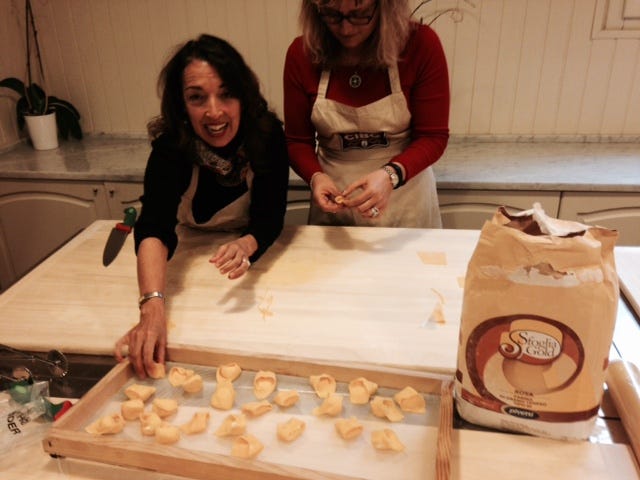
Lucia expertly guided us to do as Bolognese housewives do, rolling with just the right pressure and turns, until the dough became just the right thickness to cut for tortellini. Then came the filling and twisting, as we created the classic shape, said to resemble the navel of the goddess Venus.
A triumphant lunch ended the class and diploma in hand, I continued my study later that day joining into the lively evening aperitivo scene that spills out from Bologna’s many bars.
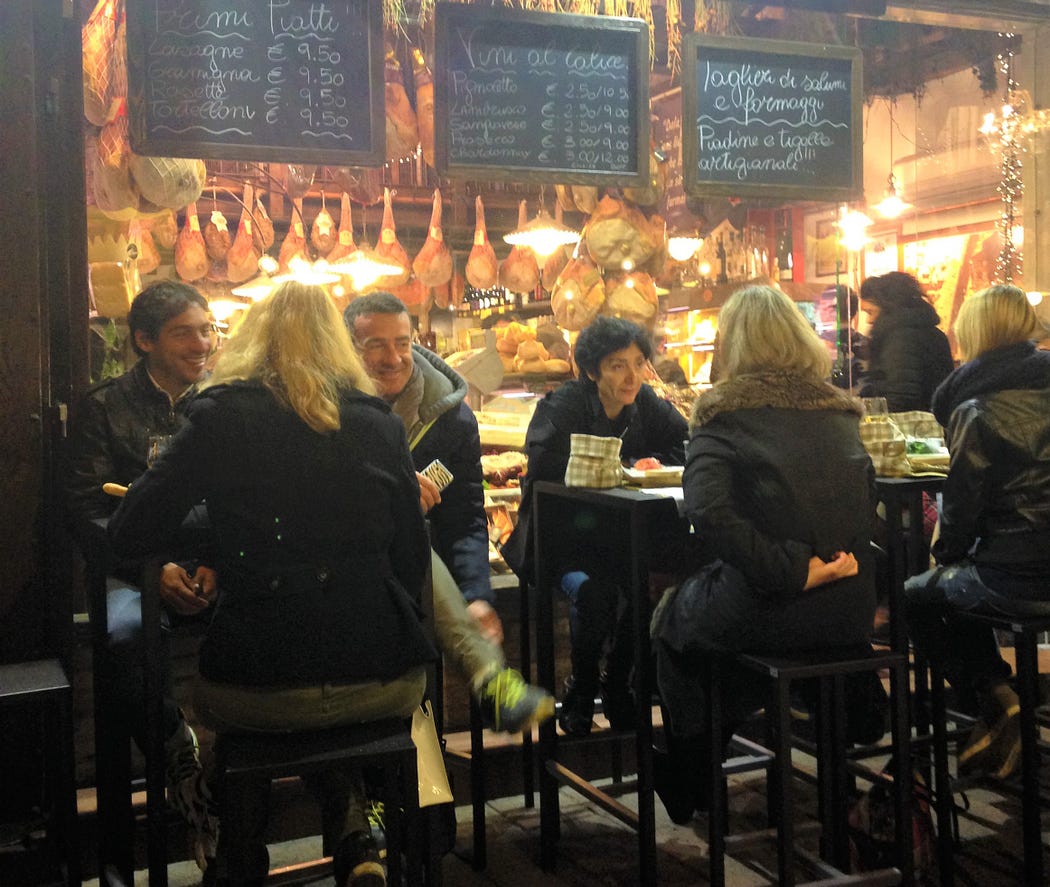
A wooden board of deliciousness was set before me, that covered all the goodies of Bologna’s Emilia-Romagna region — parmesan drizzled with Modena’s balsamic vinegar, prosciutto, and the city specialty: mortadella — aka the Grandpapa of American baloney.
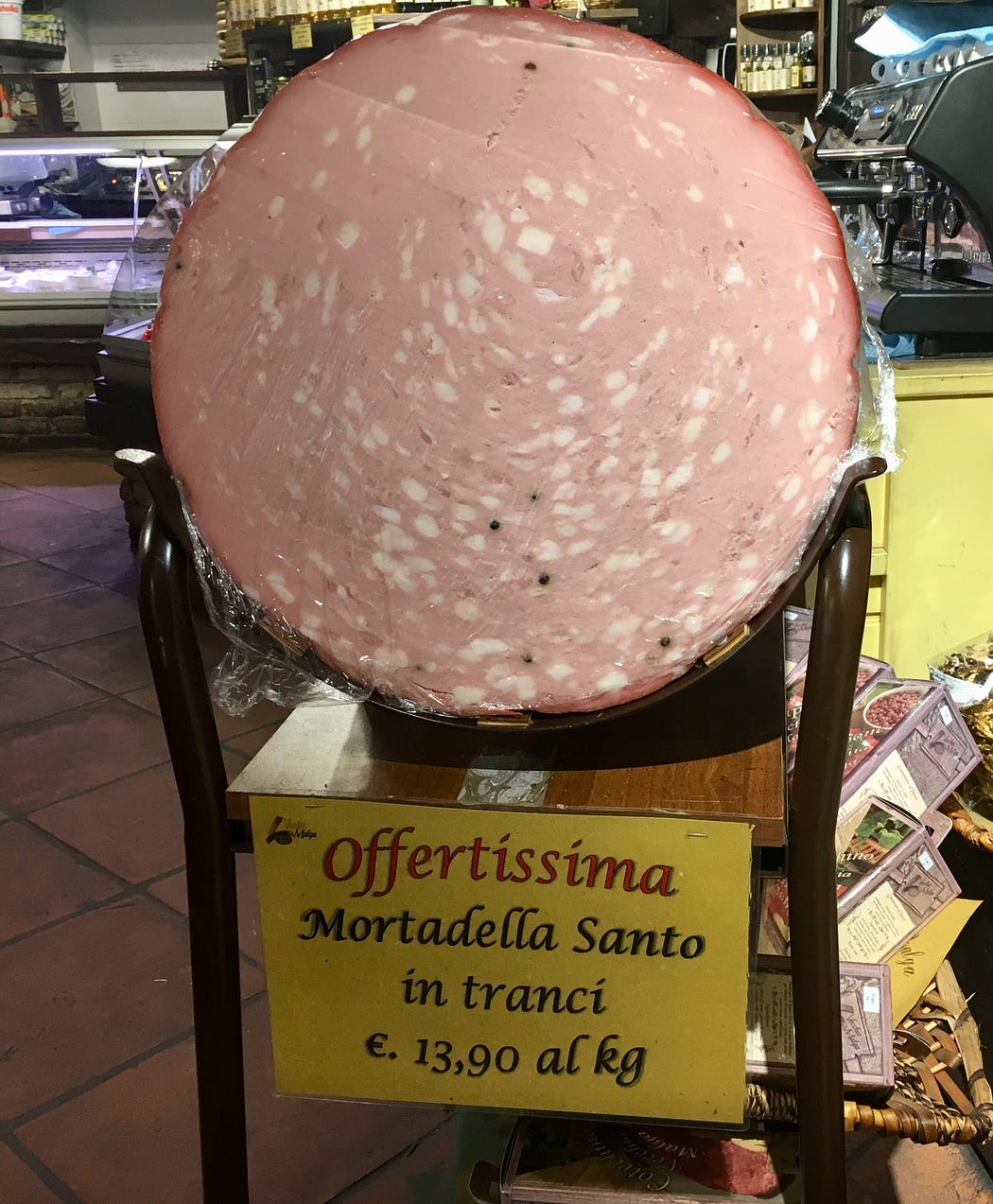
Mortadella bears little resemblance to the processed meat that was a staple of my New Jersey grammar school lunches. It’s made of high quality finely minced pork mixed with fat, pistachios, and pepper corns, cooked in brick ovens, and served in tasty cubes.
All this eating had to be balanced out with calorie burning, inspiring me to join the Bolognese ritual of taking a two-and-a -half mile uphill pilgrimage walk through 666 arches (the longest portico in the world), to reach the Sanctuary of the Madonna of San Luca.

Joggers passed by as I strolled along with seniors steadying themselves with canes, families with papa’s holding their children’s hands. The reward at the top is a grand 18th century basilica and stunning views of the rolling countryside hills.

Inside, I lined up with the devout to reach the altar shrine. There a priest held a Blessed Virgin Mary icon, believed to have been created by the apostle Luke, and transported from Constantinople to Bologna, where it brought the city many miracles. I watched those who walked before me, and when I arrived at the statue, did as the Bolognese did: planted a kiss on the glass-covered painting.

Revved up, I still needed to complete my Bologna stay with the final “T” for torre. Back in the historic center, near that tette fountain, I took the climb up 498 steps to the top of the Asinelli Tower. For the first time during my stay I found myself surrounded by tourists — most of them Italian.
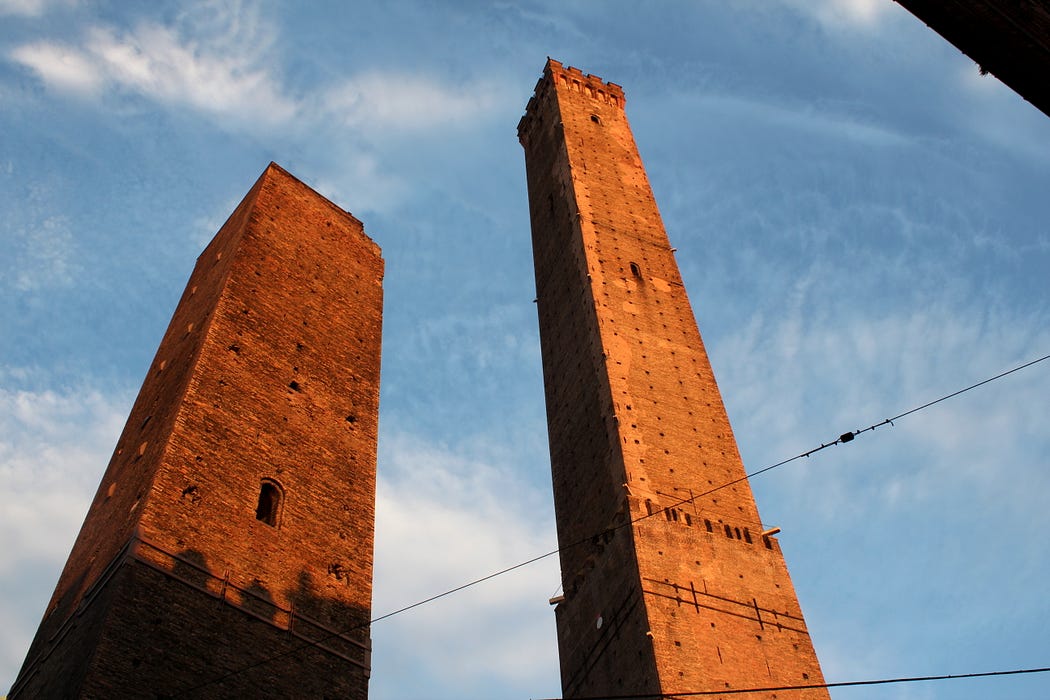
I found a spot to perch on the brick ledge of a tower window, as noble knights in olden days Bologna must have done. My heart was still racing from the ascent. I took in the stunning panorama, a circle of red roofs shrouded by a hazy sky, with the whispers of my fellow travelers in the background: “Meraviglioso!”

For more stories about Italian adventures,

“A captivating read that will make you long for your own Italian adventure.” — Italia! Magazine

